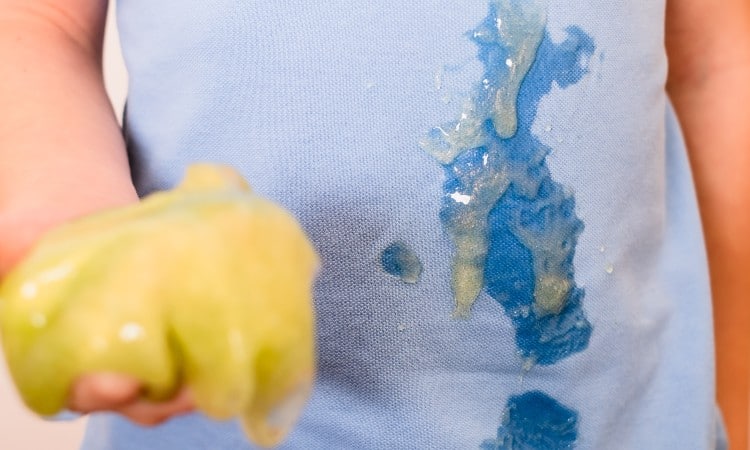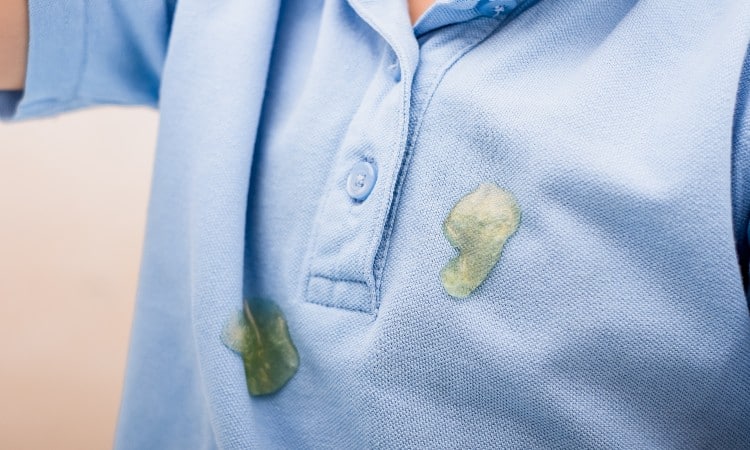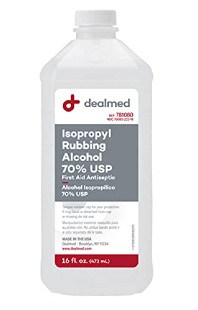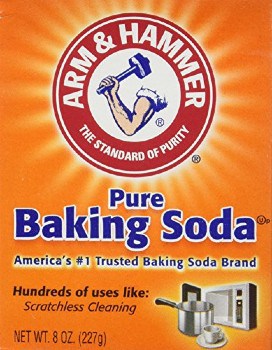Slime can be great when it comes to kid’s activities – it has the power to entertain for hours! But when the slime moves from the countertop onto the clothing – that can be a nightmare. With slime being ever more popular these days, it also means there are more instances of it getting stuck in clothes. If you’re wondering how to remove slime from clothes – keep reading.
Slime is a glue-based sensory play substance that can be removed by washing with vinegar or different types of soap. As much excess slime as possible should be removed before attempting to clean the fabric, it is stuck to. Slime is easier to clean completely if tended to when wet rather than when it has dried.
In this article, we will go over how to remove stuck-on slime from clothes using different substances and methods, including the difference between removing wet and dry slime. We will also cover the removal of specific types of slime, like fluffy slime and glitter slime.

Does Slime Come Out of Clothes?
As a parent – slime can be great. Kids love it. It can keep them busy for hours. But as a parent – slime can also be a nightmare when it gets all over someone’s clothes.
Thankfully, with a bit of scrubbing, the slime will come out of clothes in most cases.
Play slime is a glue-based sensory play substance. Most recipes contain PVA – or polyvinyl alcohol – which is a substance like classic white school glue. The PVA is mixed with borax, creating a sticky, thick, semi-fluid substance that is oh-so-satisfying to roll, drip, squish and play with.
Even though it can be a royal pain to remove completely – the ingredients in the majority of slime recipes are washable for the most part. This super sticky substance will take a bit of work to get out, but the slime needs to be dissolved.
Slime will come out of clothes, but it will usually take more than just water – there has to be something that can dissolve the PVA. Vinegar and grease removing or stain-fighting soaps can do the trick.
Slime will always be easier to remove if it is wet rather than when it has dried. Luckily – slime can take a while to dry out completely. So even if you don’t notice slime has slipped onto your child’s t-shirt right away – there is still a chance it could be wet once you get to it.
If you notice that some slime has been squished onto any fabric, it’s best to start cleaning it immediately. As with all stains – a slime stain is much easier to treat and remove completely if you can get to it immediately.
How to Remove Slime From Clothes

Nobody wants a giant slimy blob in the middle of their shirt! So it’s good to know that spilled slime can be removed from clothing in multiple ways. In all cases, it will be a much less intense job if you start cleaning slime that has gotten on clothing as soon after it has happened as possible. Wet slime will always be easier to remove than if it has been left to dry.
The first step to removing a slime stain from clothes will be getting off as much excess gunk as possible. Scrape any clumps of slime from the clothing before starting the scrubbing process. Otherwise, you’ll be making the job more difficult on yourself than necessary.
If you can’t get all of the slime off using your hands, something with a stiff, flat edge – that isn’t too sharp – can help you along. A wooden or plastic knife, spoon, or dough scraper would be useful.
Once the majority of extra slime is off the clothing, you can treat the stain. Below you will find four different solutions that can help get slime stains out of clothes for good. All of these methods can be used on wet and dry slime – but dried slime will always be tougher to get out than slime that’s still wet.
1. Vinegar
 Vinegar works wonders at dissolving the gluey substances of slime – so this is a great method to try first. When cleaning slime from clothes using vinegar, plain distilled white will be the best choice. You should never use colored vinegar – such as red wine vinegar – to avoid the possibility of the vinegar leaving a new stain behind.
Vinegar works wonders at dissolving the gluey substances of slime – so this is a great method to try first. When cleaning slime from clothes using vinegar, plain distilled white will be the best choice. You should never use colored vinegar – such as red wine vinegar – to avoid the possibility of the vinegar leaving a new stain behind.
If the fabric the slime is adhered to is expensive or particularly unique – you may want to test an inconspicuous spot with vinegar before moving forward. Applying vinegar to fabrics isn’t a problem in most cases – but it’s better to be safe than sorry.
To remove slime from clothes with vinegar – follow these steps:
- Remove as much excess slime as possible. Pick and pull off as much slime as you can using your fingers. If necessary – use a tool with a hard flat edge to help do the most efficient job. The more slime you can remove before scrubbing the stain – the better.
- Apply distilled white vinegar directly to the slime-stained area. Pour enough vinegar onto the clothing so it thoroughly wets the affected area. Allow the vinegar to sit on the stain for 5 to 10 minutes.
- Start scrubbing. Using an old toothbrush – or soft scrubbing brush – start working away at the slime embedded in the cloth. You’ll want to scrub in circular motions – vigorously enough that the slime can be worked away and dissolved but not so rough that the fabric will be damaged.
If the garment that’s been spilled on is particularly delicate – avoid using a brush and rub with an old cloth or paper towel instead – taking extra care to be gentle.
Continue working at the slime until it seems most or all of it has been dissolved and loose from the clothing. - Rinse the clothing in warm or hot water. Once all of the slime seems to have come loose from the clothes – rinse the item in warm or hot water – the hottest temperature the material will allow. This will clean off all the gunk you’ve worked through and indicate whether you’ll need to work at it more or not.
If it seems like the slime has been removed satisfactorily – the garment can move on to washing and drying as usual.
If it looks like there is still slime remaining on the item – give it another go by repeating steps 2 through 4. - Wash and dry according to care labels. After you have rinsed away as much of the stain as possible, the clothing can be washed and dried as it normally would. Read care labels and wash as directed – the item should be good as new.
2. Dish Soap
 Dish soap is another simple solution to washing stuck-on slime out of clothes. Dish soap is designed to cut through grease, making it a great option to clean through slime.
Dish soap is another simple solution to washing stuck-on slime out of clothes. Dish soap is designed to cut through grease, making it a great option to clean through slime.
To remove slime from clothes using dish soap:
- Remove as much excess slime from the clothing as possible using your fingers or a hard, blunt-edged tool.
- Squirt dish soap directly onto the slime-affected area. Dampen the area slightly with water and scrub gently in circular motions. Scrub until you have loosened as much slime from the fabric as possible.
- Rinse with warm or hot water. Check the care label to see what is appropriate for the material in question – rinse using the warmest water allowable for the fabric.
- Check the stain and see if all of the slime has been removed. If the slime is out of the clothing, you can move on to washing and drying as normal.
If there is still some slime leftover after you’ve rinsed the soap away – repeat steps 2 through 4 until all of the slime has been eliminated. - Wash and dry the garment as you usually would, according to the care label.
3. Laundry Detergent
 Laundry detergent – the thing itself designed specifically for getting our clothes clean – is another choice to consider when you’re trying to remove slime from clothes. You’ll need more elbow grease to start rather than simply throwing the item into the washing machine. This method is similar to the removal with dish soap.
Laundry detergent – the thing itself designed specifically for getting our clothes clean – is another choice to consider when you’re trying to remove slime from clothes. You’ll need more elbow grease to start rather than simply throwing the item into the washing machine. This method is similar to the removal with dish soap.
To remove slime from clothing using laundry detergent:
- Remove as much excess slime from the garment as possible.
- Pour laundry detergent directly onto the slime-affected area. Dampen the garment with water and scrub using circular motions to loosen the stuck-on slime from the clothing.
You can scrub using just your fingers and rubbing the fabric together. Or – scrub using an old rag. - Rinse the garment in hot or warm water. Check the care label’s washing instructions to determine the temperature the clothing will allow and rinse in the hottest allowable water.
Once the soap has been washed clean from the item – check the slime-stained area to see if all of the slime has been removed. If there is no slime residue left on the garment – move on to washing and drying.
If there is remaining detritus – repeat steps 2 through 4 until all the slime has been taken out of the clothes. - Wash and dry as per the care instructions on the garment.
4. Acetone or Rubbing Alcohol
 Acetone and rubbing alcohol are great for dissolving glue – these substances are, therefore, great for removing glue-based slimes. Acetone and rubbing alcohol are strong chemical substances that can react negatively with certain materials. If you plan on using either substance on your clothing, it’s important to test an area of the garment that won’t be noticed before proceeding.
Acetone and rubbing alcohol are great for dissolving glue – these substances are, therefore, great for removing glue-based slimes. Acetone and rubbing alcohol are strong chemical substances that can react negatively with certain materials. If you plan on using either substance on your clothing, it’s important to test an area of the garment that won’t be noticed before proceeding.
To remove slime from clothes using alcohol or acetone:
- Remove as much excess slime from the clothing as possible.
- Apply the rubbing alcohol or acetone to the slimed area using a cotton ball. Soak a cotton ball with alcohol and gently dab at the affected area. As you rub the alcohol onto the fabric, the slime should loosen and disappear.
Repeat this process until all the slime has been removed from the garment – replacing the cotton ball when it becomes gunked up with slime. - Rinse the garment in warm or hot water – per the care label provided – to ensure that all of the stain has been removed.
- Wash and dry the garment as usual.
If, after removing the physical slime from the clothing, you notice any discoloration to the garment – either before or after washing – it’s possible the slime contained some type of dye. Vinegar can be used to treat stains – but if this is the method you used to remove the slime and the stain remains – you’ll need something a bit more heavy-duty.
Laundry stain removers can be used directly on the stain marks on the clothing – this will work better if the clothes haven’t already been washed, and especially not dried. Follow the instructions on the stain-removing products for use on any leftover slime stains.
How to Get Dried Slime Out of Clothes
Getting wet slime out is a nuisance, but getting dried slime out is even more bothersome. Whenever possible – remove wet slime stains from clothes quickly. Otherwise, you’ll be stuck with an even tougher job.
The methods you can use to remove dry slime from clothes are similar to those listed above – only they will take some extra strength. You can also check out the three additional tips below if you aren’t having any luck with the previous instructions.
Ice Cubes
Just like with wet slime – the first thing you’ll want to do to get dry slime off is get the excess slime off of the item. Dry slime will be a bit harder to pry free, so you’ll probably need an extra tool like a metal spoon, butter knife or bench scraper.
Once you’ve pried off as much dry slime as possible, grab some ice cubes and press them directly against the affected area. Use something heavy to keep the ice on the slimed area so it can be thoroughly hardened. Alternatively – place the slime-stained item in the freeze for a couple of hours – enough time to harden any stuck-on slime.
Once the slime has been frozen, work at pulling off the hardened slime. If this method proves useful enough to remove all slime, you can wash and dry the item as usual.
If any residue is leftover, try one of the above methods for breaking down slime or move to the baking soda method below.
Baking Soda
 If ice doesn’t completely freeze the slime away from your clothing – trying a paste made from baking soda may help.
If ice doesn’t completely freeze the slime away from your clothing – trying a paste made from baking soda may help.
Prepare a thick, spreadable paste using baking soda and equal parts distilled white vinegar and water. Cover the entire area affected with dried slime with the baking soda paste. Allow the paste to dry completely.
Once the paste has dried, brush it away using a rag or paper towel. The garment can then be washed and dried as usual. After washing, check the stain again to make sure that it has all come out. If any slime residue is left over – try another method of removal before machine drying the garment.
Adhesive Remover
 For really sticky glue-based slimes that won’t come out with any of the methods described above – you may need something a bit stronger. Substances designed specifically to remove slime, gunk, and other adhesives – as goo went – can be used for extra stuck-on slime problems.
For really sticky glue-based slimes that won’t come out with any of the methods described above – you may need something a bit stronger. Substances designed specifically to remove slime, gunk, and other adhesives – as goo went – can be used for extra stuck-on slime problems.
If you plan on attempting an adhesive remover to get rid of the slime stuck on your clothes – make sure to test the product on an unobvious area of the garment before using it directly on the stain.
These products can often contain harmful chemicals that can damage certain fabrics. If, after testing the product, the garment appears unphased – you can move on to working out the slime.
After removing as much excess slime from the item as possible:
- Use a cotton ball to apply the adhesive remover liberally to the affected area.
- Dab and gently rub the soaked cotton ball on the slime until it begins to wipe away.
- Continue the process until all the slime has been removed from the clothing.
- Replace the cotton ball as necessary if it gets gunky.
Once you have finished removing the slime from the clothing, the garment can be washed. It’s usually a good idea to wash items treated with adhesive remover separately from other clothes.
How to Remove Other Types of Slime From Clothes
There is a rainbow of different slimes in the universe – and not just when it comes to their colors. Slimes can be shiny and smooth, metallic, fluffy, or full of textural elements like foam balls, bits of confetti and sparkles.
If you are working with something other than a typical classic goopy slime, see the instructions below for removing fluffy or glitter-filled types.
Fluffy Slime
The thing that makes fluffy slime so fluffy is the addition of shaving cream in the recipe. You may think that fluffy, soapy elements might make removing fluff slime from clothes easier – but unfortunately, that’s not the case.
Though it might still be a pain to remove – the good news is the same methods used for regular slime can get the job done with the fluffy stuff too.
To remove stuck-on fluffy slime from clothing:
- Pick and scrape off as much substance as possible using your fingers or a hard-edged tool.
- Pour distilled white vinegar onto the entire area that’s been affected by the fluff.
- Let the vinegar soak in for 5 to 10 minutes.
Using a toothbrush or soft scrubber – gently scrub in a circular motion to loosen the dried fluff slime. If the garment you are working on is delicate – opt for an old rag to scrub rather than a brush.
Rinse the garment thoroughly with running water to ensure all the slime has been removed. If there is remaining fluff slime – repeat the steps above until it is all gone. Once there is no more slime left – wash the garment as you usually would.
Glitter Slime
Another favorite of children – and enemy of parents – is the glitter slime. So fun and sparkly – and so spreadable. If you find yourself with a big old mess of sparkly-filled slime on your clothing – the best method to try and remove it will be the vinegar method.
While working through the glitter slime, you may find that sparkles are spreading all over the clothing. If sparkles remain after the slime has all been removed – most of these should come out with the washing. But be aware – as with most glitter products – there is almost always going to be some sparkle left behind.
Can You Remove Slime From Clothes in the Washer and Dryer?
You should never attempt to remove an untreated glob of slime that has gotten onto your clothing by washing it directly! Running through the washing machine will not be enough to get the slime out of the clothes.
Even worse – this leaves the opportunity for the slimes to transfer onto even more clothing items or get stuck, making a goopy mess inside the washing machine.
Of course, you will want to wash the clothing after the slime has been manually removed, but this should never be the first resort.
The good news is that if you discover only after you’ve accidentally washed an item stuck with slime, the slime can still be removed using one of the above methods. I would start with the vinegar process, as it tends to be the most successful and gentle on the widest variety of fabrics.
Slime that has been dried – on the other hand, creates a bigger problem. As we’ve learned, it’s much tougher to remove slime that has dried onto clothing. Putting a garment with slime into the dryer is essentially heat-curing the slime to the item.
You can still attempt removal by one or all of the above methods to get dry slime out of clothes. But this type of dried-on slime will give you the biggest workout.
When removing any type of slime spill or stain from any clothing, it is a good idea to do a meticulous inspection after your work is done. You want to be as sure as possible that there is no remaining slime on the clothes before you put the item/s in the wash. This will help you avoid the cured-on-slime situation described above.
Conclusion
All in all – I think slime has more benefits than downfalls. It lets the kids play creatively and keeps them busy and learning for long periods of time. To help avoid tricky slime stain messes – it’s helpful to employ some slime-play rules when pulling out the slime. Give the slime a designated area, and stick to that area. When playing with slime – have children wear old clothes or artist’s smocks instead of their best outfits. These simple things will help you avoid wasting precious time scrubbing slime from clothes. If all else fails and slime sneaks onto a child’s favorite shirt, you can rest assured that you’ll know just what to do.